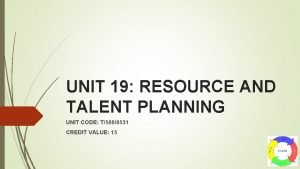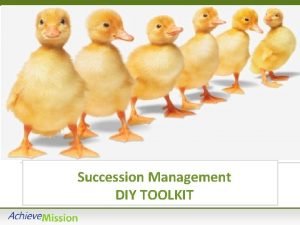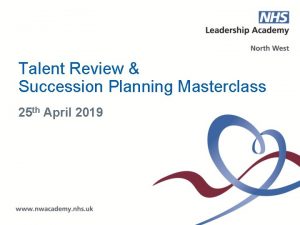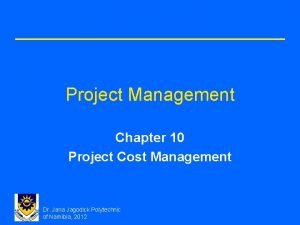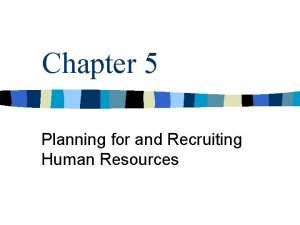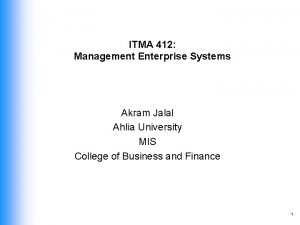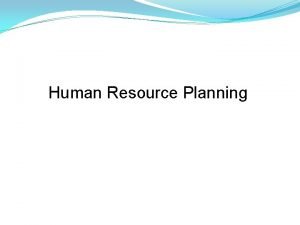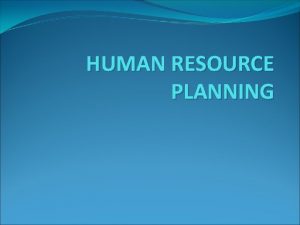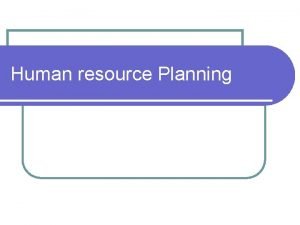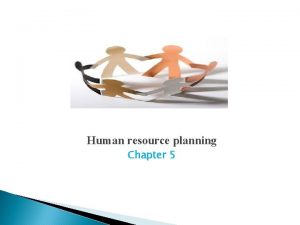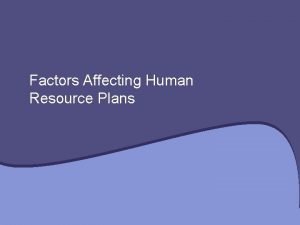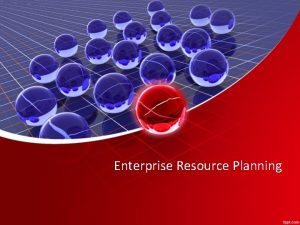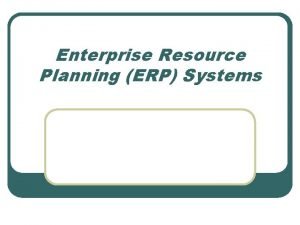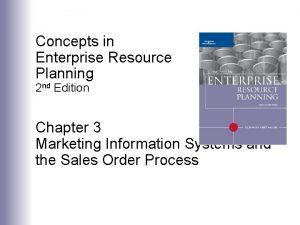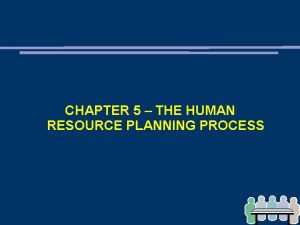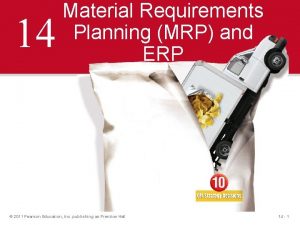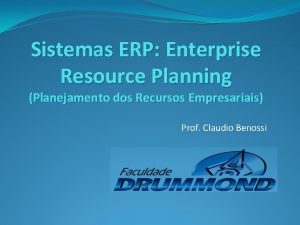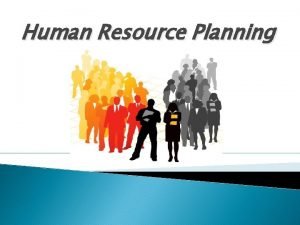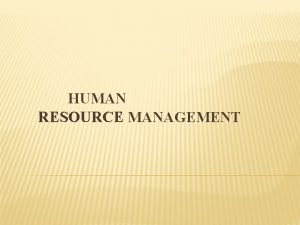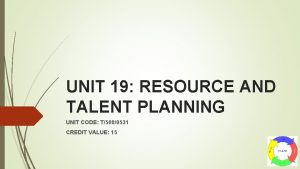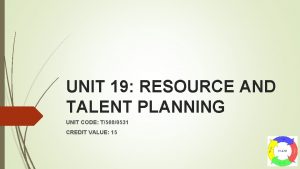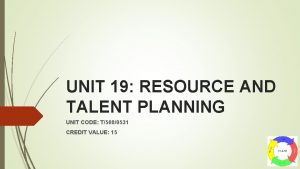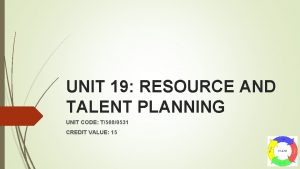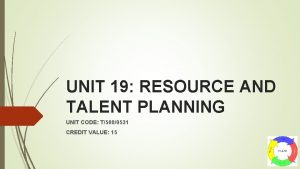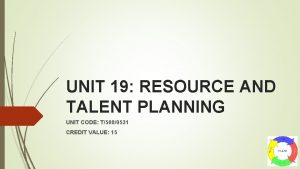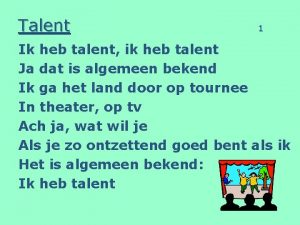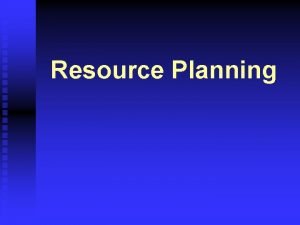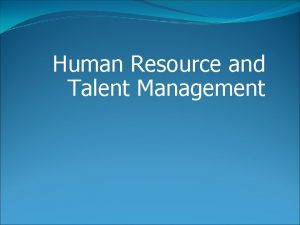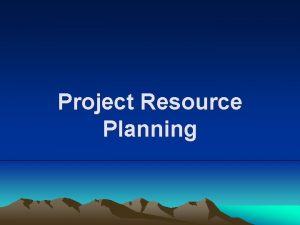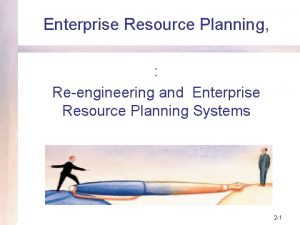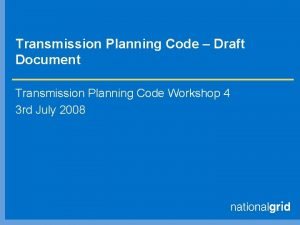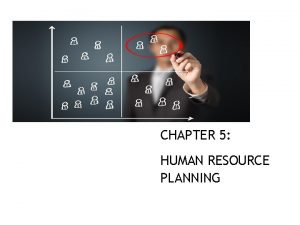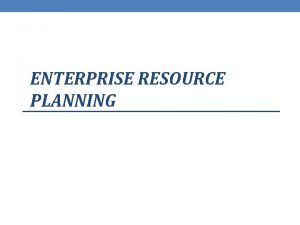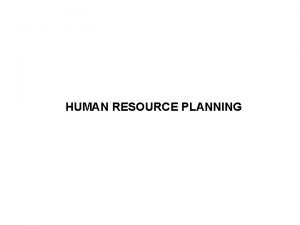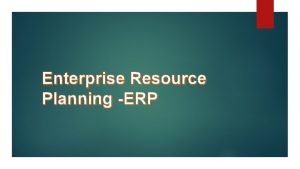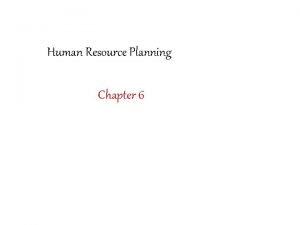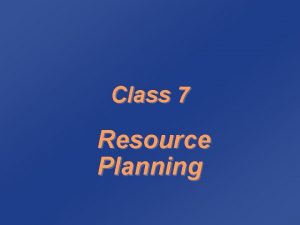UNIT 19 RESOURCE AND TALENT PLANNING UNIT CODE


























- Slides: 26

UNIT 19: RESOURCE AND TALENT PLANNING UNIT CODE: T/508/0531 CREDIT VALUE: 15

UNIT 19: RESOURCE AND TALENT PLANNING Learning Outcome 3: Apply the appropriate documents and processes which contribute to effective recruitment and selection.

THE BASIC SYLLABUS 1. Analyse labour market trends and appropriate legal requirements which influence workforce planning. 2. Determine current and anticipated skills requirements in varying contexts. 3. Apply the appropriate documents and processes which contribute to effective recruitment and selection. 4. Evaluate how to manage the human resource life-cycle within the context of a HR strategy.

LEARNING OUTCOMES Apply the appropriate documents and processes which contribute to effective recruitment and selection. D 2: Make valid judgements and recommendations on how appropriates documents and process can be improved for effective recruitment and selection.

OVERVIEW The policy is to ensure that recruitment and selection decisions are based on the ability of the applicant to meet the requirements of the job description, person specification and any other relevant criteria. All applicants and employees should be treated fairly and according to this policy and procedure, and the relevant equality policies. The organisation is committed to valuing diversity and promoting equality.

HOW TO EFFECTIVELY ADMINISTER RECRUITMENT AND SELECTION POLICIES The recruitment and selection process, from start to finish, entails several stages, which are collectively referred to as the recruitment life cycle.

HOW TO EFFECTIVELY ADMINISTER RECRUITMENT AND SELECTION POLICIES The recruitment life cycle ensures your organization attracts the best possible talent and seals the employment relationship deal with an on boarding process that welcomes new additions to your staff.

HOW TO EFFECTIVELY ADMINISTER RECRUITMENT AND SELECTION POLICIES Before hiring an applicant for a job position, a company goes through a step-by-step hiring process. This process has three key phases, including planning, recruitment, and employee selection.

HOW TO EFFECTIVELY ADMINISTER RECRUITMENT AND SELECTION POLICIES Human resource planning is when a company settles on the number of employees they are looking to hire and the skill sets they require of these employees. The company must then compare their needs to the expected number of qualified candidates in the labour market.

HOW TO EFFECTIVELY ADMINISTER RECRUITMENT AND SELECTION POLICIES The recruitment phase of the hiring process takes place when the company tries to reach a pool of candidates through job postings, job referrals, advertisements, college campus recruitment, etc. Candidates who respond to these measures then come in for interviews and other methods of assessment. Employers may check the background of prospective employees, as well as check references.

HOW TO EFFECTIVELY ADMINISTER RECRUITMENT AND SELECTION POLICIES Employee selection is the process by which an employer evaluates information about the pool of applicants generated during the recruitment phase. After assessing the candidates, the company decides which applicant will be offered the position.

HOW TO EFFECTIVELY ADMINISTER RECRUITMENT AND SELECTION POLICIES

HOW TO EFFECTIVELY ADMINISTER RECRUITMENT AND SELECTION POLICIES Employee selection may be described as a screening or sifting process. It involves gathering information about each applicant for a position, and then using that information to choose the most appropriate applicant. Interviews, tests, physical examinations, and referee and reference checks are all part of this process. In selecting staff, the idea is to choose the most ‘appropriate’ person with the qualifications that best match the position, rather than the applicant with the ‘most’ qualifications.

HOW TO EFFECTIVELY ADMINISTER RECRUITMENT AND SELECTION POLICIES Employee selection can be an expensive process — not only in terms of the time and effort put into the screening process, but also in terms of the costs of inappropriate selection. A poor selection process leads to increased costs and lower productivity by increasing: • training costs, if poorly qualified staff are selected

HOW TO EFFECTIVELY ADMINISTER RECRUITMENT AND SELECTION POLICIES • job dissatisfaction and labour turnover, if the organisation or the job does not meet the expectations of candidates selected • absenteeism rate, if staff feel inadequate on the job or feel under excessive work pressure • accident or defect rates, and fines or claims, if untrained staff are selected.

HOW TO EFFECTIVELY ADMINISTER RECRUITMENT AND SELECTION POLICIES Selecting a candidate for a position is an important decision. The decision maker must choose appropriate devices for screening applicants, gradually ‘narrowing the field’ until the most suitable person is found. Developing a short list of suitable applicants helps to limit the number of interviews to be conducted or tests and checks to be carried out. The following devices can be used in the selection process:

HOW TO EFFECTIVELY ADMINISTER RECRUITMENT AND SELECTION POLICIES • Application forms. Candidates outline information about themselves. The form may be simple, requiring details such as name, address and contact number, or it may require more detail about an applicant’s personal history, skills and experience.

HOW TO EFFECTIVELY ADMINISTER RECRUITMENT AND SELECTION POLICIES Tests. These may be written or practical and are designed to assess aptitude, intelligence or ability. They are not used by all industries, and they are not always reliable as the sole indicator of an applicant’s suitability for a position. •

HOW TO EFFECTIVELY ADMINISTER RECRUITMENT AND SELECTION POLICIES • Interviews. This is the most common device used in the selection process. The interview must be well organised and structured, and common questions must be used in each interview to ensure a consistent basis for selection. • Background checks. The employer verifies the information on the application form by contacting referees or agencies for information about an applicant’s previous experience, performance or record.

HOW TO EFFECTIVELY ADMINISTER RECRUITMENT AND SELECTION POLICIES • Medical examinations. Some jobs require certain physical attributes. For example, The Jamaica Constabulary Force requires medical assessment as part of their background checks.

HOW TO EFFECTIVELY ADMINISTER RECRUITMENT AND SELECTION POLICIES The job interview is the most commonly used selection technique. Interviews provide an opportunity for the job seeker and the organisation to learn more about each other. Interviewers ask questions to evaluate the candidate’s motivation, personality and attitudes. The interview also provides the candidate with the opportunity to find out more about the job.

HOW TO EFFECTIVELY ADMINISTER RECRUITMENT AND SELECTION POLICIES After the interviews have been conducted and the checks and testing have been performed, the most suitable applicant will be offered the position. That person is the applicant that best meets the job specification, in terms of skills, qualifications and experience.

HOW TO EFFECTIVELY ADMINISTER RECRUITMENT AND SELECTION POLICIES The organisation will usually wait for the successful applicant to accept the position before informing the other applicants that they have been unsuccessful. This will help to avoid a potential problem, if the successful applicant no longer wishes to accept the position.

HOW TO EFFECTIVELY ADMINISTER RECRUITMENT AND SELECTION POLICIES

Quiz 1. Identify the costs that may result from a poor Recruitment and selection process. Give examples. 2 Discuss the strengths and weaknesses of recruiting internally and recruiting from external sources. 3 What is the purpose of a job interview?

REFERENCES " Receptionacademy. com. N. p. , 2017. Web. 2 Nov. 2017. "How The Recruiting Process Works. " The Balance. N. p. , 2017. Web. 3 Nov. 2017. The Recruitment Process Life Cycle. " Smallbusiness. chron. com. N. p. , 2017. Web. 3 Nov. 2017. https: //www. slideshare. net/Alexander_Furmanenko/manpower-group-15661737 Wiley, R. "The Human Resource Management Function — The Employment Cycle. " 2017. Web. 3 Nov. 2017.
 Resource and talent planning
Resource and talent planning Talent review chart
Talent review chart Code commit code build code deploy
Code commit code build code deploy Talent review succession planning
Talent review succession planning Resource loading vs resource leveling
Resource loading vs resource leveling Contoh resource loading
Contoh resource loading Resource aggregation in project management
Resource aggregation in project management Short term human resources examples
Short term human resources examples Purpose of induction
Purpose of induction Chapter 5 human resource planning and recruitment
Chapter 5 human resource planning and recruitment Zero based forecasting
Zero based forecasting Enterprise resource planning example
Enterprise resource planning example Hr planning meaning
Hr planning meaning Human resource plan definition
Human resource plan definition What is human resource planning definition
What is human resource planning definition 5 stages of human resource planning
5 stages of human resource planning Human resource management question paper pdf
Human resource management question paper pdf Social factors affecting human resource management
Social factors affecting human resource management Enterprise resource planning overview
Enterprise resource planning overview Enterprise resourse planning systems
Enterprise resourse planning systems Concepts in enterprise resource planning
Concepts in enterprise resource planning Supply forecasting techniques in hrp
Supply forecasting techniques in hrp Cayenta asset management
Cayenta asset management Drp distribution resource planning
Drp distribution resource planning Enterprise resource planning tradução
Enterprise resource planning tradução Swot analysis for human resource department
Swot analysis for human resource department Resource planning definition
Resource planning definition
